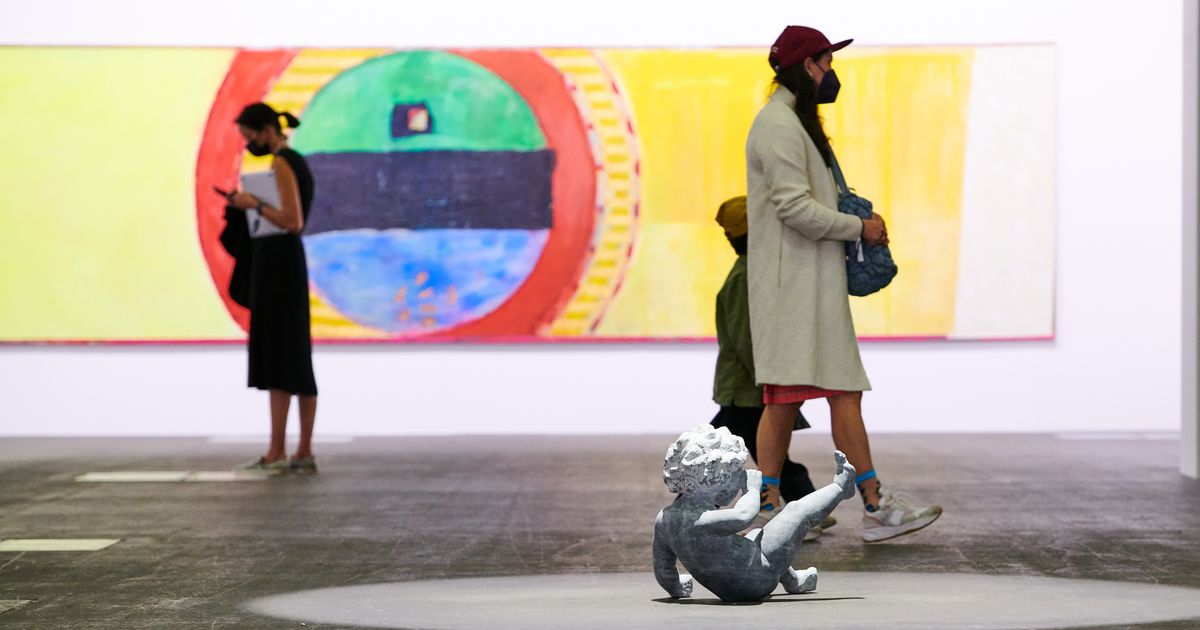
The VIP opening of the first live edition of Art Basel since June 2019 might feel more sedate than in previous years, but business is proving surprisingly brisk. Dealers reported steady sales on the first day back at the world’s premier art fair yesterday, as big-budget European buyers made up for the notable lack of collectors from the US and Asia.
Among the major early sales announced by mega-gallery Hauser & Wirth were a 1975 Philip Guston painting, The Poet, for $6.5m and a David Smith steel and copper sculpture from 1939, which sold for $5.5m. A European museum picked up a Robert Rauschenberg painting, Rollings (1984), for $4.5m from Thaddaeus Ropac at Unlimited, the fair’s section for large-scale works.
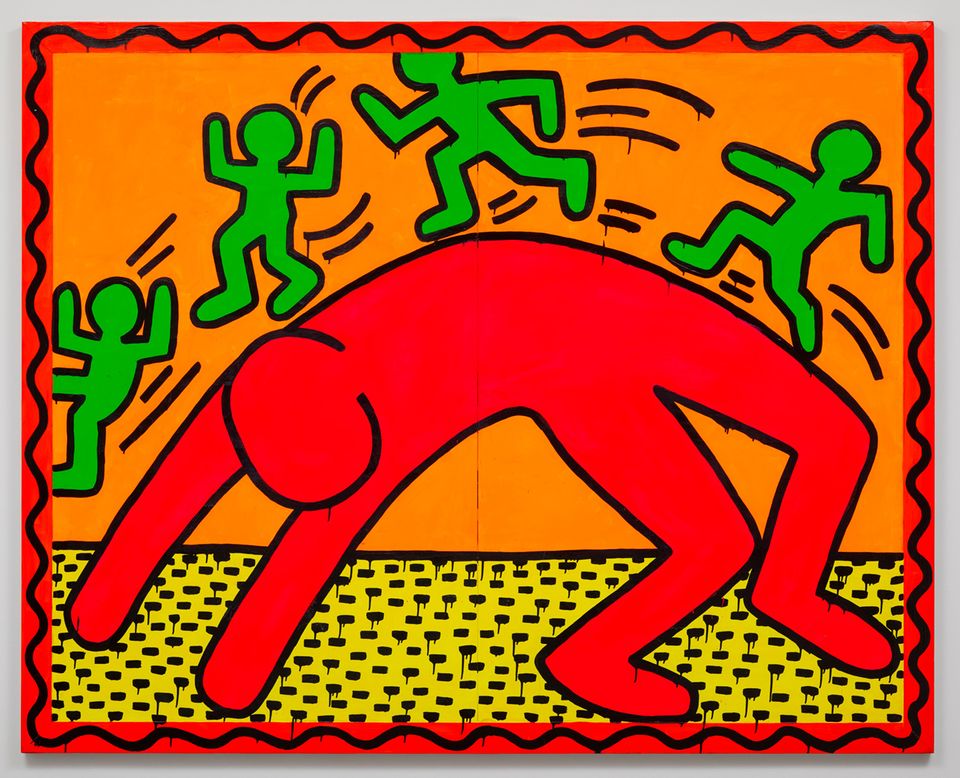
New York’s Gladstone Gallery sold an Alex Katz painting for around $2m and a vibrant Keith Haring painting—placed prominently on the outside of the booth—for between $5m and $5.5m. Pace gallery sold a Barbara Hepworth sculpture for $1.2m.
“It’s only day one, and we’ve nearly sold out the booth,” said David Maupin, the co-founder of the New York-based gallery Lehmann Maupin. “The Europeans are back and buying—and this includes institutions too. We’ve re-engaged with clients from more than ten years ago.”
Upstairs, where galleries tend to be younger with art at lower price points, Berlin dealer Johann König was also notching up sales at a rapid clip yesterday. The gallery was busy negotiating with buyers for a Katharina Grosse painting priced at €310,000 and for Trey Abdella’s lurid relief of a shark (a Halloween mask) and a skeleton for €45,000. König had even sold a Claudia Comte work, Morphing Sculpture (The Mountain), priced at €120,000, at a dinner the night before the fair opened.
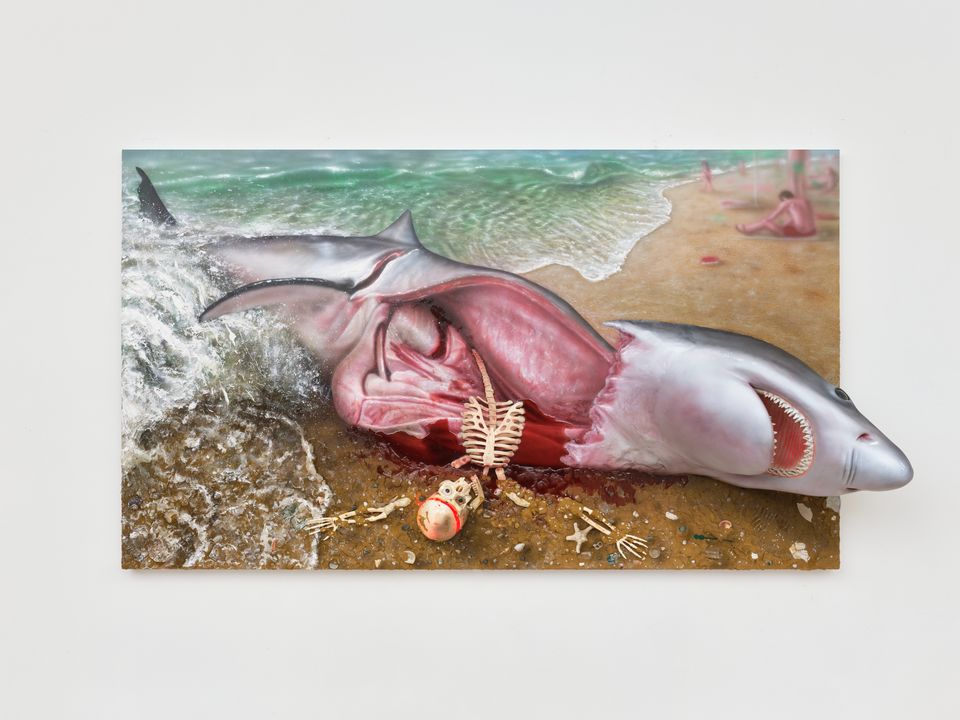
“People used to come to browse, but now they come to buy what they already know,” he tells The Art Newspaper. “But for us the fair is also important as a platform to show what we have and communicate with collectors.”
With Covid-19 restrictions in force at the fair this year, including mandatory masks and proof of vaccination, “collectors [have] made a commitment to come here,” notes the art advisor Bona Montagu. “There’s a lot of hoops you have to jump through to attend the fair, so I think the people who have made it have come with the intention to buy art very seriously.”
Some dealers said they felt the absence of some American and Asian buyers deterred from attending because of travel complications caused by the pandemic. Weeks before the fair opened, the US government had issued a “do not travel” advisory for Switzerland.
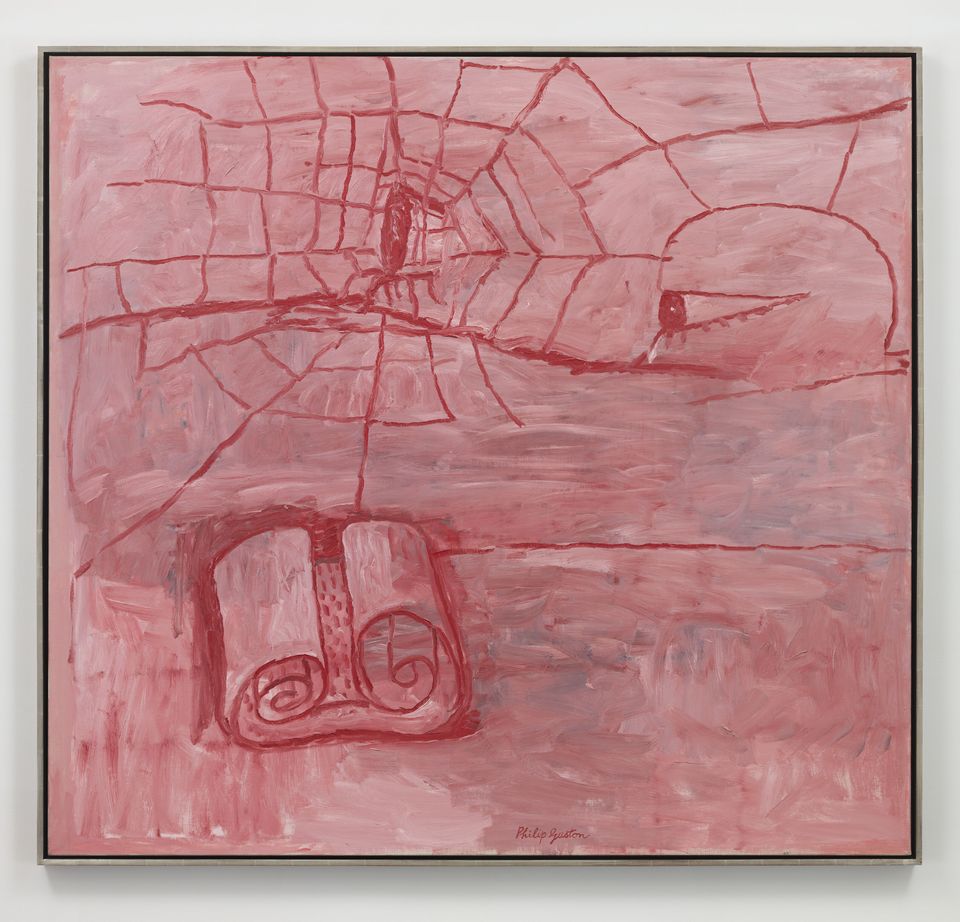
“There’s less of an American audience here than ever before,” said Iwan Wirth, the co-founder of Hauser & Wirth. Nevertheless, the gallery sold out its entire show of new sculptures by the Brooklyn-based artist Simone Leigh—who will represent the US at the Venice Biennale next year—at its Zurich gallery before Art Basel. The majority of buyers were European museums, Wirth said.
The pace of sales adds to evidence that the coronavirus crisis has done little to curb the appetites of rich art collectors. While previous economic crises have reduced the fortunes of the world’s wealthiest, the pandemic has left little mark—and even benefited many millionaires. According to the 2021 Art Basel and UBS art market report compiled by the economist Clare McAndrew, the number of billionaires rose 7% in 2020 and their wealth increased by 32% over the year.
It’s astonishing that so many people have made their way here Raimund Thomas, Munich-based dealer
For dealers forced to close their galleries during the pandemic lockdowns, Art Basel represents a vital opportunity to revive contact with collectors at home and abroad. “We have to use this opportunity to have live contact with customers,” said Rosemarie Schwarzwälder, co-founder of the Vienna art gallery Nächst St. Stephan. She sold a work by Katharina Grosse priced at €230,000 in the opening hours of the fair.
“It is good to see our collectors again and most of them are back,” said Raimund Thomas at Munich-based Galerie Thomas, who had just sold a bronze Tony Cragg sculpture for €180,000 and was about to clinch a deal on a Jean Dubuffet work. “In general, willingness to travel is limited, so it’s astonishing that so many people have made their way here.”
Still, Art Basel has promised to help exhibitors with a “solidarity relief fund” of CHF1.5m ($1.6m) to be distributed between any galleries disappointed with their sales at the fair. At the opening press conference, the fair’s global director Marc Spiegler said if every gallery at the fair applied, that would equate to a 10% discount in exhibitor fees. But many of the bigger galleries will opt out, he said, describing their approach as “very collegiate.” One major dealer told Spiegler he had sold two pieces at Unlimited so would not need the fund money.
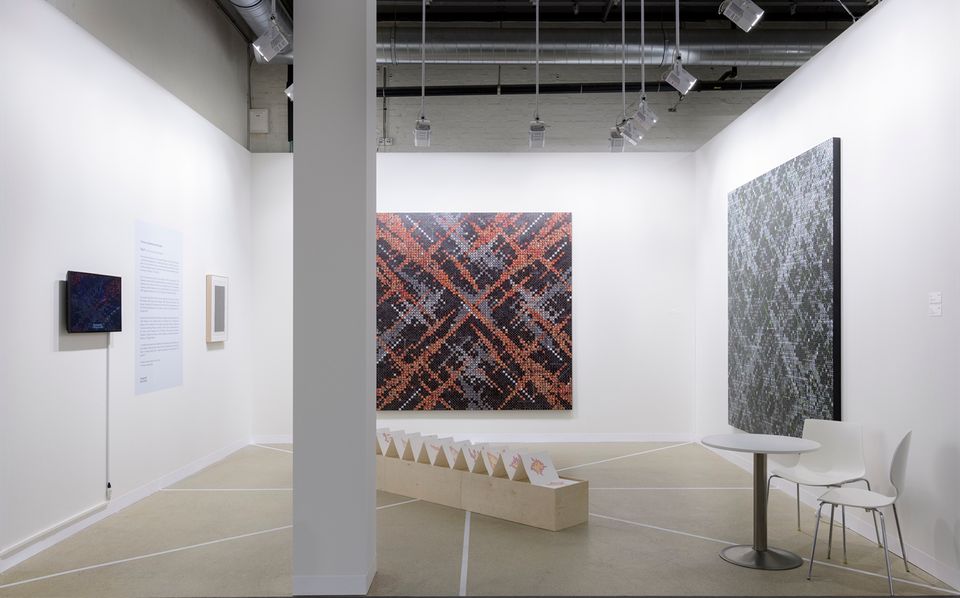
Five Asia-based galleries whose owners could not attend in person operated “ghost booths” at the fair. Lorenz Helbling of Shanghai-based ShanghArt spoke to collectors via a video link on a tablet in the booth. Despite the unconventional set-up, the gallery, which has been attending Art Basel for two decades, sold two acrylic-on-basswood works by Ding Yi, each priced at $465,000, within hours of the fair’s opening.
“We wanted to take part, but travelling from China is very complicated and cumbersome,” Helbling said. “After 20 years, we know a lot of collectors, so a lot of people are saying hello and asking how we are, and they are glad to see we have survived the pandemic.”
A virtual presence does have its drawbacks, Helbling concedes. “[Normally] Art Basel is a good way to show what we are doing, but also to see what others are doing,” he said. “The problem [this year] is that we can’t see what everyone else is doing, so this is not a solution for the long-term.”
Source link : https://www.theartnewspaper.com/news/art-basel-2021-sales-report












